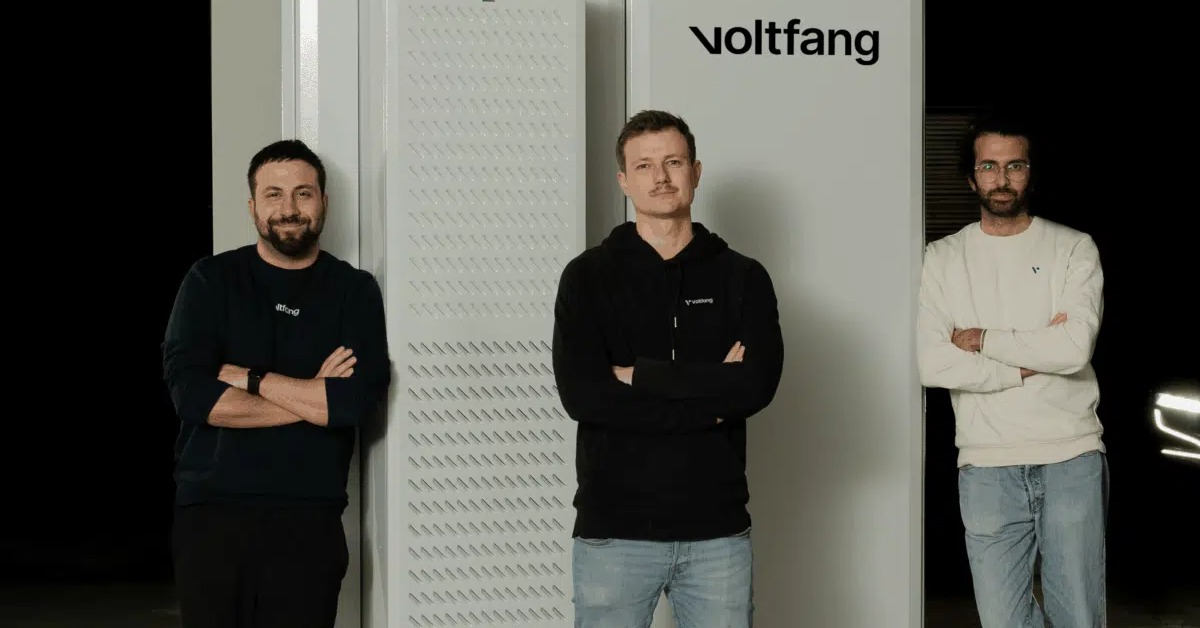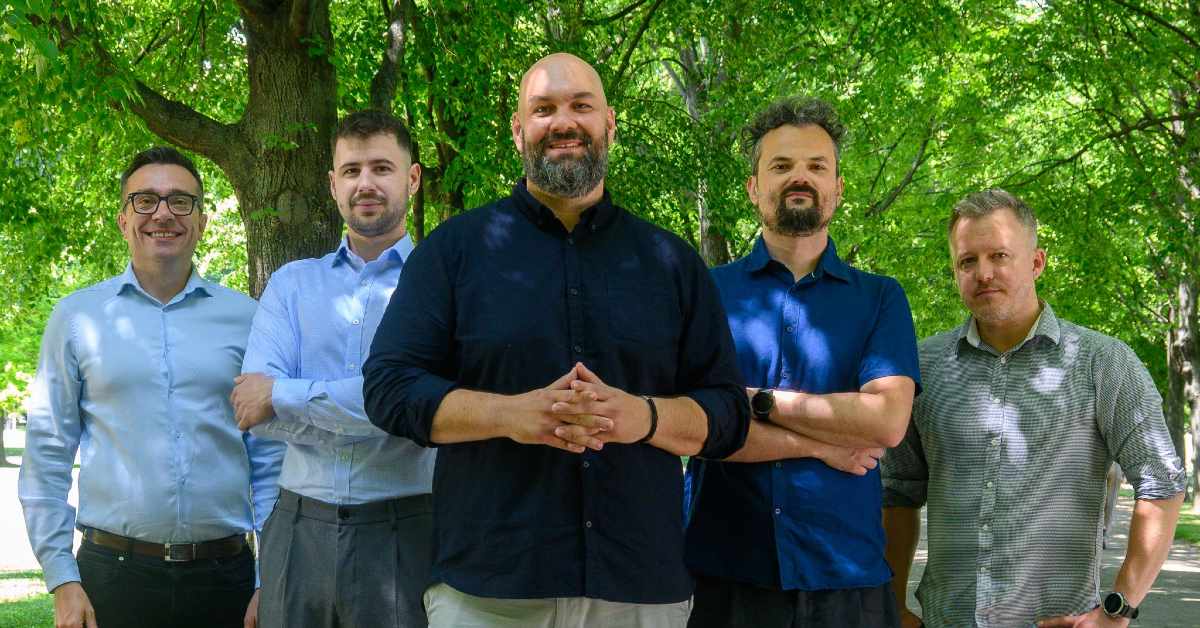Modern business is undergoing a profound transformation—not only driven by the rise of AI, but also by a fundamental rethinking of customer experience, values, and meaning. Everyone involved in this landscape can feel the shift—and the role of the business analyst is no exception. Responsibilities, goals, tools, and approaches are evolving at a rapid pace, and what used to work is quickly becoming outdated. So how can business analysts remain effective? How can they build strong relationships with cross-functional teams? And what mindset shifts are necessary to stay relevant in today’s fast-changing world?
Nastassia Shahun, an international expert and the driving force behind more than ten successful projects across FinTech, E-commerce, and EdTech, shares her insights on how to become a strategic partner in the era of digital transformation.
— Nastassia, you recently spoke at BA&Beyond, one of Europe’s leading business analysis conferences. What strategic role do you see for business analysts in digital transformation?
Digital transformation is less about technology and more about meaning and alignment. In this process, business analysts play a truly strategic role. I see this role as a bridge between vision and execution—between business goals and technological implementation.
At BA&Beyond 2025, where I was selected to speak from a highly competitive pool of applicants, I emphasized that business analysts are not just project facilitators. We are catalysts for change and innovation.
In practice, this means going far beyond documenting requirements. It involves identifying root causes, aligning conflicting stakeholder priorities, and turning abstract objectives into actionable, measurable outcomes.
— You presented three strategic approaches: design thinking, data-driven decision-making, and strategic cross-functional partnership. In your opinion, which of these has the greatest impact on business transformation? And how have you adapted these approaches in real-world projects?
The greatest impact doesn’t come from using any single approach in isolation—it comes from deliberately combining them. In my work, I treat design thinking, data-driven decision-making, and strategic partnership not as standalone techniques, but as three core roles I consciously switch between to drive meaningful transformation. This triad was the foundation of my presentation at BA&Beyond 2025, where it received highly positive feedback from the international business analysis community.
Design thinking allows me to approach challenges through the user’s lens. At a FinTech company, I helped redesign the onboarding flow of an internal platform. I initiated a series of user interviews and applied the Jobs To Be Done framework to better understand behavior patterns. One major insight: users were getting lost at the very first step—before grasping the platform’s value. I proposed streamlining the onboarding by removing unnecessary setup steps and introducing a guided tour. After implementation, retention increased by 30%, and support requests dropped by over one-third.
The data-driven approach helps me eliminate assumptions and bring clarity to decision-making. In an e-commerce project launching a flash-sale feature, I advocated for integrating real-time analytics. I led efforts to track user activity, drop-off points, and spikes in support tickets. When the data showed a surge in confusion during flash events, I traced the issue to unclear UX. I recommended updates to in-app messaging, CTAs, and FAQs. As a result, the next release saw a 15% increase in daily active users and 30% fewer support tickets.
Strategic partnership is what turns cross-functional teams into aligned ecosystems. During a CRM implementation, I led efforts to connect departments that previously worked in silos. I built a stakeholder map, conducted alignment sessions with sales, support, and ops leads, and introduced regular syncs with business sponsors. This structured collaboration helped us prioritize with clarity, launch on schedule, and—most importantly—deliver results. In the first quarter post-launch, customer satisfaction (CSAT) rose by 25%.
Each of these approaches delivers value on its own—but used together, they empower business analysts to move beyond task execution and become architects of strategic value. That’s the mindset I aim to foster—not only in my daily work, but through international speaking, writing, and community engagement.
— What global trends in business analysis do you observe today? What challenges and opportunities do they bring?
Business analysis is going through a profound transformation—both in the tools we use and the role we play. One of the most significant global trends is the shift from simply gathering requirements to shaping solutions and driving value. Today’s analysts are stepping into strategic territory: they’re becoming Business Designers, bridging customer experience, data, and organizational goals.
I see this not only in my own projects—especially in international FinTech and e-commerce environments—but also across the broader professional community through conferences, hackathons, and expert panels. For example, at BA&Beyond 2025, where I presented my original talk, we explored how analysts are no longer just custodians of documentation. They’re emerging as catalysts of innovation. This evolution isn’t just a concept—it’s something I put into practice every day.
Another important trend is the growing integration of data-driven thinking and AI tools into the analyst’s daily workflow. I’ve often witnessed decisions being made purely on gut instinct—and seen how even basic user behavior visualizations can dramatically shift project direction. In my own work, I’ve implemented real-time analytics, facilitated A/B testing, and collaborated on predictive models. These tools help me back my recommendations with evidence—and they also build greater trust in the analyst’s role.
Of course, these shifts bring along a new set of challenges. As AI continues to advance rapidly, it raises the standard for digital literacy across the board. Hybrid and distributed teams, particularly those spread across different countries, often face issues related to trust and transparency. At the same time, the growing emphasis on customer experience calls for a heightened sense of empathy and a stronger command of design thinking.
To address these challenges, I not only continue evolving my own approach—I also share frameworks and solutions with others. After one of my lectures on UAT and the strategic role of analysts for an international BA community, several participants adopted my pre-UAT model and later shared positive outcomes. That kind of feedback is incredibly rewarding—and it shows how sharing real-world practices contributes to collective growth.
This is how global expertise is built: step by step, project by project, through active contribution to the evolution of the profession.
— During your talk at BA&Beyond, you touched on the topic of design thinking. What does it mean to you, and how does it support the work of a business analyst? Could you share real-life examples where this approach helped solve business challenges?
For me, design thinking is more than a framework—it’s a mindset that enables purposeful, value-centered analysis. It allows business analysts to move beyond the question of “what needs to be built?” and instead ask, “why does the user actually need this?” In my work, I use design thinking as both a foundation for empathy-driven analysis and a tool to de-risk digital initiatives early on.
In my BA&Beyond 2025 presentation, I shared a case where design thinking essentially rescued a struggling FinTech platform. The issue wasn’t technical—the system worked as designed—but during onboarding, users dropped off in large numbers. The experience felt overwhelming and unclear.
I led empathy interviews, mapped the user journey, and applied the Jobs To Be Done framework to uncover the true goal users were trying to achieve. The root issue? Users didn’t understand the platform’s purpose early enough—they were asking, “Why do I need this?” and not getting an answer.
Based on these insights, I proposed a complete redesign of the onboarding flow. The new approach deferred complex configuration steps to later stages, introduced a guided tour as the user’s first touchpoint, eliminated technical jargon, and replaced it with clear, value-focused messaging.
I built a low-fidelity prototype in Figma, conducted user testing with five participants, and iterated based on their feedback. After launch, onboarding retention improved by over 30%, and interface-related support tickets virtually disappeared.
In another e-commerce project, I used design thinking to reframe a search optimization request. Instead of just tweaking the search bar, I observed user behaviour and realized the issue was decision fatigue, not the tool itself. Using a JTBD perspective, I redefined the need as: “Help me find the right product quickly and with confidence.” That insight led to a new solution: guided flows, smarter filters, and redesigned product cards. It fundamentally shifted the project’s trajectory and significantly shortened the time to purchase.
I regularly share these approaches through talks, community mentoring, and publications. I firmly believe that when analysts adopt a design-thinking mindset, they stop acting as requirement scribes—and start becoming true creators of strategic value.
— What promising tools do you use in your work? In your opinion, what role do AI, Big Data, and modern forecasting methods play in business analysis today?
I believe modern tools don’t just expand an analyst’s toolkit—they reshape the role itself. Today, a business analyst is expected not only to understand user needs but also to work confidently with data, behavioural models, and predictive insights.
In my day-to-day work, I actively rely on behavioral analytics platforms like Amplitude and Pendo, visual modeling tools such as Miro and Signavio, UX testing environments including Figma and Maze, as well as lightweight predictive solutions developed in close collaboration with data science teams.
One impactful example was an e-commerce project involving a flash sale feature. Initially, the planning relied on gut feeling—classic HiPPO (Highest Paid Person’s Opinion) dynamics. I pushed for defining clear success metrics upfront—specifically, growth in daily active users (DAU). I led the setup of behavioural tracking, including funnel analysis and drop-off monitoring. The data revealed a pattern: a spike in support requests during each flash sale.
Upon investigation, I found that users didn’t fully understand how the feature worked. I proposed targeted UX enhancements—improved FAQs, in-app tooltips, and more intuitive CTAs. In the very next release, support tickets dropped by 30%, and active user engagement rose by 15%.
Another notable case was in FinTech, where I worked with a data science team on a churn prediction model. While I didn’t build the model myself, I translated its outputs into actionable business responses—defining churn risk thresholds, outlining follow-up flows for marketing, and aligning the logic with customer success goals. The result was a targeted retention campaign that significantly boosted engagement in a vulnerable user segment.
I’ve come to believe that analysts don’t need to be data scientists—but we do need to be data fluent. I personally create dashboard templates, run A/B tests (including UX copy and navigation experiments), and help teams shift from assumption-based thinking to evidence-backed decisions.
I also share these practices through professional articles and community engagements—because I believe data literacy shouldn’t be a niche skill, but a core capability for every modern business analyst.
— What solutions developed by you are applicable across different industries — for example, in EdTech, FinTech, and e-Commerce?
Across industries—from FinTech and EdTech to e-Commerce—I strive to apply universal, scalable approaches that remain sensitive to each business context. Over time, I’ve distilled three core principles that guide my work: user value, requirement traceability, and early feedback loops. These allow me to create solutions that are both adaptable and outcome-driven—regardless of the industry.
In EdTech, I developed a reference requirements model for an electronic mentoring platform. It covered three user groups (mentors, mentees, and administrators) and included templates for user flows, functional modules, and UX patterns. This model became the foundation for a corporate mentoring system and was later adapted for an internal learning platform. I also published a paper based on this work, where I introduced mind mapping as a technique to systematize requirements—a method that received positive feedback from both peers and the broader BA community.
In FinTech, I worked on products focused on financial wellness, credit scoring, and CRM systems. For example, in a credit platform project, I managed integrations with external data providers like Argyle and Pinwheel, and designed borrower flows that met both UX and regulatory requirements. I also introduced a pre-UAT process, which led to a 3.5x reduction in acceptance errors and brought greater predictability and alignment to release cycles.
In e-Commerce, I leveraged behavioural analytics, design thinking, and strategic stakeholder alignment. In one project, I identified a mismatch between user expectations and the existing search structure. Using the Jobs To Be Done framework, I reframed the problem and led UX prototyping efforts. This shift helped the team redefine the solution and resulted in higher engagement and improved conversion rates.
In each case, I steer away from rigid templates and instead apply a consistent logic: observe real user behaviour, extract meaningful insights, and design solutions that align with business goals. This approach proves to be both highly reproducible and adaptable across different industries.
I also actively share these practices through talks, conferences, and mentoring engagements, and I’ve seen how these methods successfully scale beyond individual use cases. This is how I contribute to shaping business analysis as a cross-disciplinary, impact-focused profession.
— You work in an international environment and speak at global conferences. How does this influence your approach to analysis and collaboration with teams from different countries?
Working in an international environment has been both a professional challenge and a continuous learning opportunity. It has taught me adaptability, cultural awareness, and communication agility. I’ve collaborated with distributed teams across the US, the EU, and Asia—and time and again, I’ve seen that effective business analysis isn’t just about what the requirements say, but how they’re framed, understood, and implemented in different cultural contexts.
I quickly realized that what’s considered “detailed enough” in one region may seem vague in another. Some cultures encourage open debate during meetings, while others prefer to raise concerns privately. Because of this, I always tailor my approach—using visual diagrams instead of long text-heavy documents, facilitating sessions across time zones, and syncing with local leads before key demos or retrospectives.
In one global e-commerce project, I coordinated stakeholders from five different countries. I started with stakeholder mapping and individual interviews to surface misaligned expectations. Then I facilitated a collaborative Miro session to co-create a unified roadmap. This approach helped align fragmented interests into a shared plan—significantly reducing late-stage rework and internal conflict.
Speaking at global conferences like BA&Beyond 2025 gives me the chance not only to share my perspective, but also to learn how the role of the business analyst is evolving worldwide. During my talk on the strategic role of BAs in digital transformation, I received insightful feedback from professionals across Europe, North America, and Asia—reinforcing that the challenges I tackle are globally relevant.
I also mentor teams at international hackathons and contribute to educational programs. In these formats, it’s especially important to foster a universal professional language—one grounded in empathy, clarity, evidence-based thinking, and strategic alignment. Promoting these principles across borders is something I take pride in—and view as part of my contribution to building a stronger, more connected global BA community.
— What skills and qualities do you believe are essential for the business analyst of the future? And how do you contribute to developing these competencies in junior professionals?
I believe the business analyst of the future needs more than technical expertise or facilitation skills—they must think systemically, recognize interconnected dynamics, and operate with both empathy and strategic vision. As the pace of change accelerates and decisions grow more complex, cross-functional competencies are becoming essential.
The skills I consider essential for impactful work include a product mindset—the ability to focus on creating real value for both users and the business, rather than simply completing tasks; data fluency, with confidence in using analytics tools, conducting A/B testing, and applying hypothesis-driven thinking; empathy and a strong UX sensibility to uncover the true needs behind technical requests; strategic alignment to help teams prioritize around business goals; the ability to clearly visualize and model complex ideas; and cross-cultural communication skills that support effective collaboration across diverse environments.
While I don’t engage in traditional one-on-one mentoring, I actively share knowledge and practices through a variety of community-centered formats. I regularly advise colleagues and early-career analysts who connect with me through project teams or professional networks, respond to questions during conference panels and live Q&A sessions, and mentor at international hackathons—guiding teams as they refine their ideas, align with business value, and articulate user needs. I also lead webinars and workshops on topics such as UAT strategy, UX requirements, and the strategic role of business analysts, and contribute to the field by publishing original frameworks and insights in professional articles and open-access resources.
For me, this is a form of horizontal mentoring—a way of contributing to the profession by shaping how others think, grow, and lead. When I see teams adopting my ideas—whether it’s implementing pre-UAT processes or using my approach to UX requirement documentation—I know I’m making a tangible contribution to the evolution of business analysis as a strategic discipline.
Written by Lyudmila Chicherova










01
These are the top UK-based PR agencies for startups and scale-ups in 2025